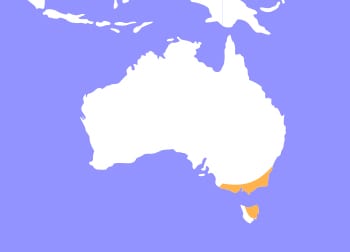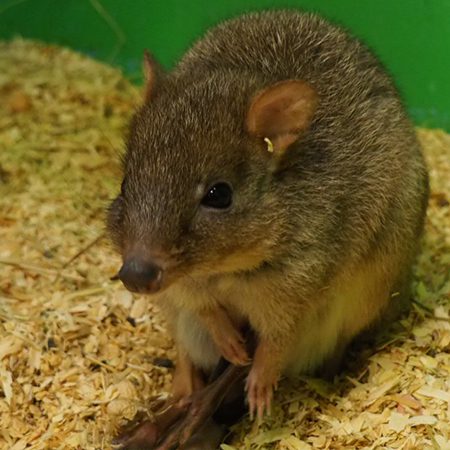Bettong
Bettongia gaimardi
Brush-tailed bettongs are also known as woylies, they are an extremely rare, small marsupial endemic to southern Australia. There populations and range have shrunk over time. This is due to predation by European foxes and more recently feral cats. It once inhabited 60% of the Australian mainland. In the mid-19th century they were abundant, but by the late 90’s they occurred in less than 1% of the continent. Brush-tailed bettongs is a species of potorine marsupial (family of small australian marsupials). They are a largely nocturnal species that forages for fungi during the evening. When searching for food, they stick to a central range around their nest. Brush-tailed bettongs are largely fungivorous (gaining nutrition from fungi), digging for a wide variety of fruiting fungi. They will also eat tubers, seeds, and insects.
They inhabit mostly forest, woodland, and shrubland environments. At the species peak populations, it was known to have a more versatile range into more arid and desert climates. The length of the head and body combined is between 12 to 15 inches. On average they weigh around 3 lbs. Grey-brown fur covers the entire body, with their tail being a darker brown color with a blackish tip. Brush-tailed bettongs have strong foreclaws for digging. Being a marsupial, a key feature they are known for is the pouch on its underside that carries their offspring.

Bettongs natural range includes southeastern Australian and eastern Tasmania.
HABITAT -In the wild they inhabit forest, woodland, shrubland environments of Australia.
DIET -Fungi is a main staple of their diet, they also eat tubers, seeds, and insects.
FUN FACT -Bettongs rarely, if ever, need to drink water to survive, getting fluids from the rest of their diet instead..
SOCIAL BEHAVIOR -They live in small colonies, and will pair together for mating.
ACTIVITY -They are largely nocturnal, starting to forage around dusk into the night.
PREDATORS -Predators of the Brush-tailed bettong are European foxes and feral cats.
SIZE -They can be between 12 - 15 in long, weighing around 3 lbs.
RELATIVES -The Bettongia genus contains 4 sub species. Being marsupials they are related to wallabies and kangaroos.
CONSERVATION -Brush-tailed bettongs are considered Critically Endangered by the IUCN.
Cub Creek Animal Care Information
Housing - Our brush-tailed bettongs are housed in three separate colonies and enclosures. One colony lives in multi species enclosure with ring-tailed lemurs and various parakeets. Living in this multi species enclosure promotes social interaction and diversity. The multi species enclosure has fresh watering bowls and an artificial waterfall. Bedded with mulch, and plenty of hides and trees, simulating a more natural environment. Our other bettong colonies live in a specialized enclosure just for them! It’s bedded with shavings, and with plenty of hides and trees.
Diet - Our bettongs get a specialized diet consisting of bettong mix, diced apples and sweet potatoes, mushrooms, mixed fruit and vegetables, and eggs. Bettong mix is a staple in their diets, which we make right here at camp! This mixture is designed to provide adequate nutrition helping to keep them happy and healthy. Bettong mix consists of seeds, dried fruit, rabbit pellets, and insectivore mix. We give our bettongs cooked eggs as a special treat, that they love!
Enrichment - Our brush tailed bettongs get plenty of socialization from campers during the summer. They will create hides and other structures for them to play on out of cardboard. Living in a multi species enclosure also helps to promote socialization.

